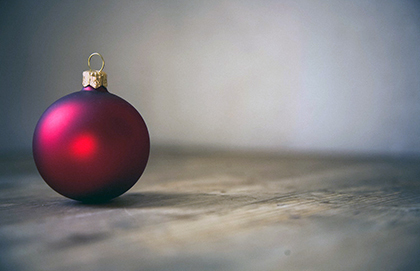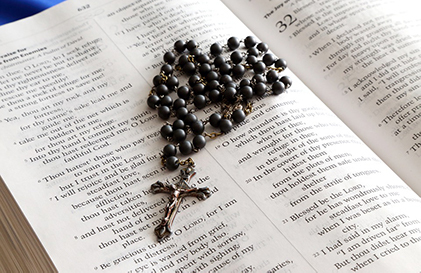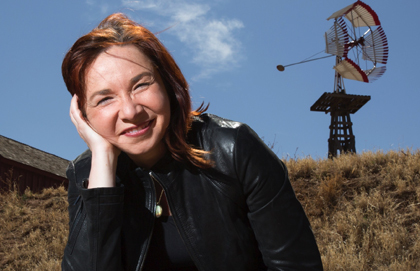This is the third article of a weekly series of Advent reflections. To read the second piece, please click here: The Point of Darkness Around the Light.
How can we find peace in a space that feels impossibly divided?
Increasingly, it seems as though peace is hard to come by in our society, and perhaps in our own lives. At a time when polarization can feel like a new norm, and social media keeps us isolated and away from each other, the presence of peace in daily life might be dimmer than the light a second candle provides to an entirely dark room.
Within the Catholic Church, of which I am part, the fallout from the Amazonian Synod, with all its controversy, feels grim. Traditionalists and post-Vatican II supporters find themselves divided at times, despite being under one authority of a Pope very different from his two predecessors.
The continued revelations of sexual abuse scandals and the people hurting and healing from them is resulting in a hurt, broken Church. One that’s surely alive, but its members are certainly suffering.
The world at-large is hurting, too. It’s a challenging time. And you don’t need me to tell you that, or list off a litany of reasons why or how that is. I wonder, during this week representative of peace, how I can possibly find peace when the very essence of the world around me feels in shambles. Even the chaos of lights and noise and gifts and baking and planning can be enough to disturb one’s peace.
As I lit that second Advent candle meant to represent peace this week, I thought about the circumstances under which Christmas will be celebrated in the corners of the world, and in a Church that feels splintered.
Peace might be far away. In some cases, it is entirely absent. While December and the holidays and Christmas cheer and sugar cookies and carolling seem outwardly joyful, the “holiday season” is often a very difficult, messy, challenging one. Whether it’s reunions with long-lost relatives, or in-laws who just don’t get along, the Advent, and ultimately Christmas season, can often feel the opposite of peaceful. But I am sure you already know that.
And yet, as last week brought a message of hope amid darkness, I truly believe there is reason to believe in peace, too. If we allow and welcome it. Not grasping and desperately searching, counterproductively forcing peace into our lives, (how would that work, anyways?), but with a deep breath in and out, and an acknowledgement that at Christmas, and even now, God is with us. Emmanuel, God with us.
It might take time, it might seem impossible. But I think true peace can only be found if we stop looking for it. We’re not going to find peace scrolling social media or with new shows on Netflix or blasting new music on Spotify. We don’t need to seek out “self-care” routines and escape from life to find peace — or we shouldn’t have to, anyway. Peace begins with the acknowledgement of God in our midst, as is the entire message of Christmas: Jesus coming to us, and our accepting Him as the softest, most innocent and unthreatening image of a newborn baby.
When I think of the Holy Family sitting in a smelly stable, exhausted, minutes after the newborn came into the world, peace is not necessarily the first thing that comes to mind. We often have a vision of the manger, the stable, being a place of solace and peace. I’m a city dweller, and no expert on this. But if you’ve ever spent a single moment in or around a barn, you’d know the animals stink and are noisy. And that’s on a good day. Now, I’m certain it wasn’t entirely awful, and Mary would not have uttered a word of disturbance. But imaginably, the couple welcoming a newborn baby in a feeding trough mustn’t have been the most calming, pleasant experience, even with animals on their best behaviour.
But interiorly, I can only begin to imagine the peace that must have filled their hearts and minds, as they welcomed into the world the Messiah, the One who would come to save us. Mary did, in fact, know that He would walk among us, would suffer and die on the Cross. Yet, a peace must have filled her immaculate heart, too, with the knowledge that she was in the presence of One who was to bring redemption.
So while the world may feel disturbed and in constant upheaval, there is still space for peace. A peace that surpasses understanding, I might add. One that does not rely upon the external, nor even really the internal. We find rest in Jesus, when we can’t find rest in our daily life, when we can’t find rest in our own church walls, when we can’t find rest in ourselves. This is where we find peace.
In times of difficulty and distress, when peace seems far or absent, the presence of God with us is a reminder that He is constant. His peace can fill us, when nothing else seems to be sitting right in us. The peace doesn’t mean the suffering will go away, nor does it mean that our daily life will drastically change. But, at the very least, it brings the awareness that He is with us.
Let nothing disturb you
Let nothing frighten you
All things are passing
God never changes
Patience obtains all things
She who possesses God lacks nothing
God alone suffices.
~ St. Teresa of Avila






